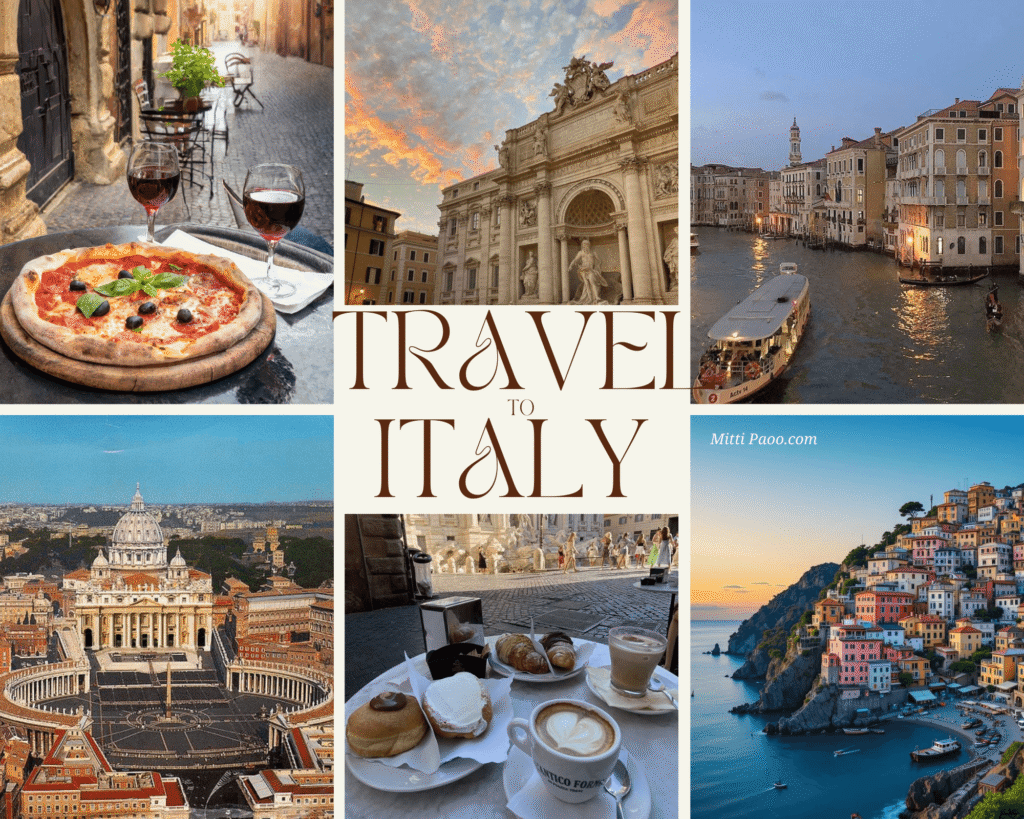🤩 Italy on a Budget 2026: 5 Affordable Destinations

Everyone dreams of Italian travel, picturing themselves gliding across a Venetian canal or tossing a coin into the Trevi Fountain. However, the cost of popular cities like Rome, Florence, and Venice can quickly turn that dream into an expensive nightmare. Therefore, planning an affordable Italian adventure in 2026 requires focusing on hidden gem regions, budget-friendly transportation, and local eating habits. Consequently, this guide provides the essential knowledge to experience the culture, history, and incredible food of Bella Italia without draining your savings. You can have an unforgettable, authentic trip to Italy for a fraction of the typical cost.
🗺️ The Strategy: Swap Tourist Hotspots for Affordable Gems
The crucial first step to saving money in Italy is redefining your itinerary. Specifically, travelers must consciously choose to explore the lesser-known southern and central regions where local economies have not been inflated by mass tourism. Therefore, bypass the crowds of the North and head to the authentic, sun-drenched regions below.
1. Puglia: The Heel of the Boot (Coastal Savings)
Puglia, the heel of Italy’s boot, offers stunning coastlines and unique architecture at profoundly cheaper prices than the Amalfi Coast. Instead of paying astronomical rates for a hotel with a sea view in Positano, stay in a charming trullo (a traditional conical-roofed house) in Alberobello or an affordable, whitewashed apartment in the “White City” of Ostuni.
- Why It’s Cheap: The region relies more on domestic tourism, keeping prices for accommodation and dining lower.
- What to See: The Baroque beauty of Lecce (often called the “Florence of the South”). The unique architecture of Alberobello, and the incredible, clear beaches along the Adriatic Sea.
- Budget Tip: Seafood is abundant and cheaper here; enjoy fresh frutti di mare at a local trattoria outside the main squares.
2. Umbria: The Green Heart (Tuscan Alternative)
Known as the “Green Heart of Italy,” Umbria provides the same rolling hills, historic hilltop towns, and delicious wines that Tuscany offers, but without the high price tag. Consequently, hotel and agriturismo (farm stay) prices are significantly lower. Moreover, Umbria is perfect for slow travel, allowing you to settle in and enjoy the pace of local life.
- Why It’s Cheap: It lacks the global recognition of Tuscany, keeping tour group volume down.
- What to See: The medieval splendor of Orvieto (with its stunning Duomo and subterranean tunnels) and the spiritual significance of Assisi.
- Budget Tip: Skip the expensive wine tours in Chianti. Instead, explore the local Sagrantino wine trail in Montefalco for an authentic, affordable tasting experience.
3. Sicily: An Island of Value in Italy
As the largest island in the Mediterranean, Sicily is a vibrant blend of history, unique cuisine, and volcanic landscapes. Furthermore, daily costs for food and local transport are routinely lower than on the mainland. Therefore, visitors experience a distinct culture with incredible value.
- Why It’s Cheap: Accommodation prices in cities like Palermo and Catania are budget-friendly. The local focus on simple, high-quality street food keeps meal costs down.
- What to See: The ancient Greek ruins in the Valley of the Temples, the bustling food markets of Palermo, and the towering Mount Etna.
- Budget Tip: Embrace the street food! Specifically, grab a delicious arancino (fried rice ball) or cannolo from a street vendor for a cheap, filling, and authentic lunch.
4. Bologna: Italy’s Culinary Hub (The Student Advantage)
Bologna is known as Italy’s gastronomic capital, but it is also a major university city. Unsurprisingly, the massive student population drives down the cost of living, especially for food and nightlife. Therefore, you enjoy world-class food without the Michelin-star prices.
- Why It’s Cheap: The abundance of student-friendly bars and eateries means prices are designed for tight budgets.
- What to See: Explore the longest continuous portico system in the world, climb the Two Towers, and simply eat your way through the region that gave us Bolognese ragù.
- Budget Tip: Take advantage of Aperitivo. For example, pay a fixed price (usually €8–€12) for a drink, and enjoy a complimentary buffet of snacks and appetizers, essentially covering dinner.
5. The Cilento Coast (Amalfi’s Hidden Twin)
When travelers search for coastal beauty, the Amalfi Coast dominates. However, just south of the famous peninsula lies the Cilento Coast in the Campania region—a true hidden gem. Consequently, this area boasts crystal-clear waters, ancient Greek ruins, and stunning cliffs, but with an average daily cost that can be half of its northern neighbor.
- Why It’s Cheap: It is primarily a vacation spot for Italians, who prefer to keep it quiet and affordable.
- What to See: The remarkably preserved Greek temples of Paestum and the charming medieval village of Castellabate.
- Budget Tip: Rent a small apartment or an agriturismo in a town like Acciaroli. Thus, you can enjoy the coastal charm and self-cater, maximizing your savings.

💰 Essential Budget Hacks for 2026 Travel towards Italy
Successfully navigating Italy on a budget relies on more than just location; it requires smart choices regarding transport, food, and accommodation.
1. Transportation Tricks
- Book Trains Early: High-speed trains (Frecciarossa or Italo) are fast and convenient, but prices can double or triple if you book a day before. Therefore, book all intercity train tickets weeks or even months in advance for the best savings. Alternatively, use slower Regional trains (Regionale) for shorter hops; they are much cheaper and have fixed prices.
- Use Low-Cost Airlines: For long distances (e.g., Milan to Sicily), instead of an overnight train, check budget airlines like Ryanair or EasyJet. Furthermore, flying into secondary airports (like Bergamo for Milan or Pisa for Florence) often results in significantly cheaper flights than landing at the main hub.
2. Accommodation Choices
- Agriturismo is King: Rather than a pricey hotel, stay at an agriturismo in rural areas like Umbria or Puglia. Consequently, you get a charming, locally sourced experience, and rates are consistently lower.
- Stay Outside the Walls: In major cities, book accommodation in neighborhoods just outside the historic center (e.g., Trastevere in Rome or Oltrarno in Florence). Thus, you cut costs by 20–40% and gain a more authentic, local experience, easily walking or taking a short bus/metro ride to the sights.
3. Food Savings: Eat Like a Local
- The €1.20 Espresso: Always drink your coffee standing at the bar (al banco) like a local. Because sitting down (al tavolo) instantly activates a table service fee, often tripling the price of your drink.
- Menù Fisso Lunch: Seek out trattorias or osterias offering a menù fisso (fixed-price menu) for lunch. Typically, this includes a pasta dish, a main course, water, and sometimes wine for around €15–€20—a huge saving compared to dinner prices.
- Picnic Power: Visit a local market (mercato) or supermarket and buy fresh bread, local cheese (pecorino), cured meats (prosciutto), and wine. Therefore, you create a delicious, cheap picnic lunch to enjoy in a park or piazza, saving a fortune on restaurant bills.
🎉Your Affordable Italian Dream
Planning an affordable trip to Italy in 2026 is entirely achievable. By focusing on culturally rich but budget-friendly regions like Puglia, Umbria, and Sicily, and by implementing savvy saving hacks for trains and dining, you can stretch your travel budget significantly. Ultimately, the secret to affordable Italian travel is simply embracing the authentic local lifestyle. Moving away from tourist traps and prioritizing immersion over luxury.
Read More Articles Click Here. Read Previous Article Click Here.



